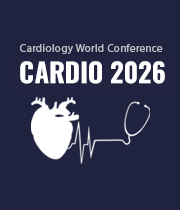Title : Atherogenic index of plasma as a risk stratification tool in patients with chronic coronary syndromes undergoing percutaneous coronary intervention
Abstract:
Background: The atherogenic index of plasma (AIP) is a new indicator associated with abnormalities in lipid metabolism. This study aims to explore the relationship between AIP and the risk of major adverse cardiovascular events (MACE) in patients with chronic coronary syndromes (CCS) who underwent percutaneous coronary intervention (PCI).
Methods: This retrospective cohort study analysed 2274 patients grouped by AIP tertiles, utilizing clinical data collected at Fu Wai Hospital between September 2016 and August 2017. The primary endpoint was MACE, including repeat revascularization and in-stent restenosis. Kaplan-Meier curves, multivariate COX regression models and the restricted cubic spline were used to analyse the association between AIP and the risk of MACE. Receiver Operating Characteristic (ROC) was used to determine the optimal cutoff value for AIP to predict MACE.
Results: The mean age of the total population was 58.41±9.52 years, 1767 (77.70%) males. During a mean follow-up period of 60.45 months, a total of 1054 (46.35%) patients experienced MACE, 331 (31.4%) in AIP tertile 1 group, 335 (31.78%) in AIP tertile 2 group, and 388 (36.81%) in AIP tertile 3 group. The incidence of MACE escalated with higher AIP (P=0.001). After adjusting for age, sex, cigarette smoking, previous PCI, presence of peripheral arterial disease, presence of multivessel coronary artery disease, presence of re-stenotic lesions, calcification of target lesions, chronic total occlusions, and number of stents, AIP was independently associated with an increased risk of MACE (HR, 1.368; 95% CI 1.1029-1.713; P = 0.006). Patients in the AIP tertile 3 group exhibited a 1.181-fold higher risk compared to the AIP tertile 1 group (HR, 1.181; 95% CI 1.018-1.371; P = 0.028). A linear dose-response relationship was observed between AIP and the MACE (non-linear P = 0.874, overall P = 0.023). Moreover, ROC analysis suggested that the optimal cutoff value for AIP to predict the risk of MACE was 0.147.
Conclusions: These findings highlight a significant association between elevated AIP levels and increased risk of MACE, with an optimal prognostic cutoff value of 0.147. The results underscore the clinical utility of AIP as a practical and efficient tool for risk stratification in CCS patients undergoing PCI, emphasizing its potential integration into post-procedural management protocols to optimize prognostic evaluation and therapeutic decision-making.




